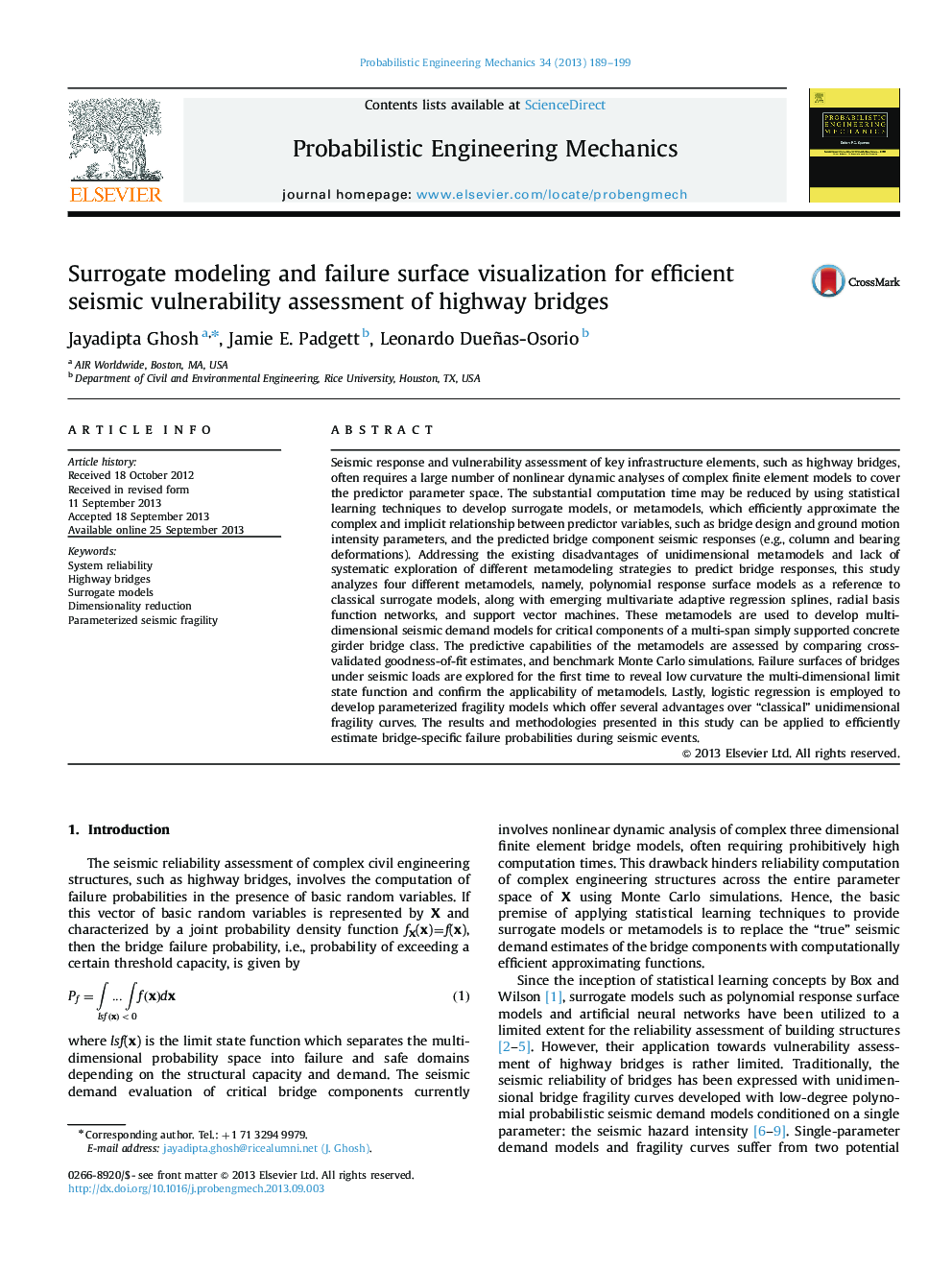| Article ID | Journal | Published Year | Pages | File Type |
|---|---|---|---|---|
| 807182 | Probabilistic Engineering Mechanics | 2013 | 11 Pages |
•Efficient approximation of seismic response of bridge components using metamodels.•Multivariate adaptive regression splines emerge as the best surrogate model.•Failure surface visualization reveals low curvature of multi-dimensional failure domain.•Logistic regression enables development of parameterized seismic fragility models.•Fragility models can incorporate field measurement data for reliability assessment.
Seismic response and vulnerability assessment of key infrastructure elements, such as highway bridges, often requires a large number of nonlinear dynamic analyses of complex finite element models to cover the predictor parameter space. The substantial computation time may be reduced by using statistical learning techniques to develop surrogate models, or metamodels, which efficiently approximate the complex and implicit relationship between predictor variables, such as bridge design and ground motion intensity parameters, and the predicted bridge component seismic responses (e.g., column and bearing deformations). Addressing the existing disadvantages of unidimensional metamodels and lack of systematic exploration of different metamodeling strategies to predict bridge responses, this study analyzes four different metamodels, namely, polynomial response surface models as a reference to classical surrogate models, along with emerging multivariate adaptive regression splines, radial basis function networks, and support vector machines. These metamodels are used to develop multi-dimensional seismic demand models for critical components of a multi-span simply supported concrete girder bridge class. The predictive capabilities of the metamodels are assessed by comparing cross-validated goodness-of-fit estimates, and benchmark Monte Carlo simulations. Failure surfaces of bridges under seismic loads are explored for the first time to reveal low curvature the multi-dimensional limit state function and confirm the applicability of metamodels. Lastly, logistic regression is employed to develop parameterized fragility models which offer several advantages over “classical” unidimensional fragility curves. The results and methodologies presented in this study can be applied to efficiently estimate bridge-specific failure probabilities during seismic events.
